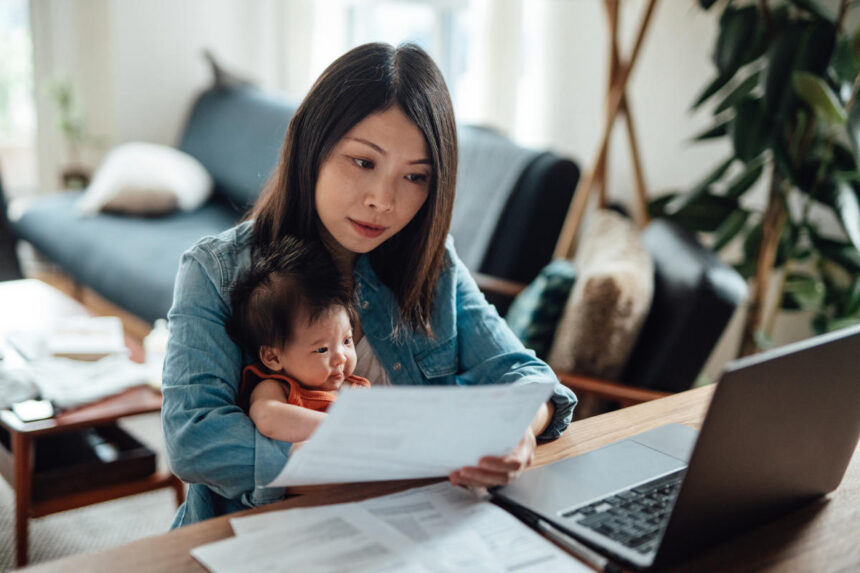Your bank account number is like an identity document; This is valuable information that is unique to you. This number is used to transfer and receive money, ensuring that payments are transferred to and from the correct accounts. For example, knowing your bank account number allows you to sign up for direct deposit, transfer money between banks, pay bills, use peer-to-peer payment apps, and much more.
You probably don’t have your bank account number memorized – and you don’t need to. There are different ways to access it when necessary. Read on to learn where to find your bank account number and how to keep this information safe.
A bank account number identifies and provides access to a particular bank account, such as your checking or savings account. It is private to you and must be kept secure.
Bank account numbers are usually between eight and 12 digits long. However, don’t confuse your bank account number with your debit or credit card number: they are not the same. Even if your debit card is linked to a checking account, the number on your card is different from your checking account number.
There are several places to look for your bank account number, depending on your account type and where you bank. Below are five ways to easily find your bank account number when needed.
Whether you receive paper or electronic bank statements, you should be able to find your account number on this document issued by the bank. Look for an eight- to 12-digit number at the top of the statement. It should be labeled “Account” or “Account Number”.
Learn more: What is a bank statement and how to read it?
If you’re looking for your checking account number, your checkbook (if you have one) can help you find it quickly. Look for your account number at the bottom of a check. Typically, the left-most number is your routing number, followed by your eight- to 12-digit account number in the center of the check.
Learn more: Where are the routing and account numbers on a check?
Log in to your bank’s online platform using your username and password. You’ll likely need to answer a security question, provide a one-time code sent to your phone, or use another multi-factor authentication method. Once logged in, you should be able to find your account number listed in your account details.
If you haven’t set up online banking yet, you’ll need to sign up through your bank’s website before you can log in and view your account details.
Learn more: Online banking or traditional banking: which is right for you?
If you use mobile bankingyou will find your account number in your bank’s mobile application. Simply log in, complete any multi-factor authentication if necessary, and access your account details.
Learn more: 5 Major Benefits of Mobile Banking
If all else fails, contact your bank. If your bank has a convenient location, stop by and ask for your account details in person. Otherwise, contact customer service for assistance.
When you make a transfer, enroll in direct deposit, or otherwise use your account number, you may also be required to provide your bank routing number.
A routing number is a nine-digit number that identifies a specific financial institution in the United States, but it is not specific to your account. So, if you have two accounts at the same institution, they will have different account numbers, but the same routing number. Note that large institutions may have multiple routing numbers to serve different areas of the country.
You can often find your routing number on a check, on your bank or credit union’s website, or by searching online for “[Your bank’s name] routing number”.
Your bank account number and routing number are essential for identifying your deposits and completing transactions.
Learn more: What is an ABA routing number?
There are many situations where you may need to access and even share your bank account number. However, you must do so with caution.
Knowing these numbers can make it easier for fraudsters to access your accounts, steal your identity, and make unauthorized purchases. Protect your information and know when you can share that information, and when you can’t.
Be wary of giving out your banking details when:
-
You don’t know the person or company asking for it. This may seem obvious, but don’t trust your sensitive information to a stranger, no matter how official it may be.
-
Online shopping. When shopping online, pay with a credit card rather than a debit card or bank account. Credit cards come with liability protection, ensuring that you are not responsible for unauthorized purchases on your account.
-
You are on an insecure website. You can often tell if a website is secure by looking at its URL. Secure websites usually start with “https” rather than “http” or have a padlock icon in the address bar. Additionally, some browsers may warn you with a pop-up window when you access an insecure site.
-
Use public Wi-Fi. Public networks are generally less secure than private networks, making your online activity more vulnerable. Do not access your bank accounts or share sensitive information while on a public network.
-
Receiving an unsolicited request for information. If someone – even someone who appears to represent your bank – asks you for your bank account number out of the blue, be careful. Bank representatives should not contact you for this information without you having initiated some sort of transaction or communication.









